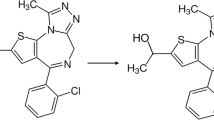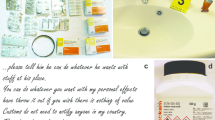Abstract
The author looks critically at the description of a suicide case involving a barbiturate dose that could not be determined exactly and doses of hydroxyzine and tilidine. Drugs with a short and a medium short duration of action obviously had the greatest effect. There was no description of an investigation of the gastric contents. The concentration of barbiturates in the blood alone was sufficient to cause death. The deceased also took hydroxyzine, and then finally 750 mg tilidine in capsule form. Tilidine's action is relatively slow in onset. The author discusses tilidine's possible contribution to the cause of death and comes to a different conclusion from the authors of the case report, especially as regards the key words “Tilidine — Intoxication”.
The authors of the case report ought to have called it “A Death Case Involving Barbiturates, Hydroxyzine and Tilidine” rather than giving it such a suggestive title as “A Death Case Involving Tilidine”. This would have been a more accurate representation of the facts and would have assisted the reader to grasp the complex toxicological situation more clearly.
Zusammenfassung
Der Verfasser unterwirft die Kasuistik eines Selbstmordes, bei dem eine nicht sicher festgestellte Menge an Barbituraten sowie außerdem Hydroxyzine und Tilidin eingenommen wurden, einer kritischen Analyse. Schnell und mittellang wirkende Präparate waren dabei eindeutig überlegen. Eine Mageninhaltsuntersuchung wurde nicht beschrieben. Die ermittelte Blutkonzentration von Barbituraten allein lag bereits im Bereich letaler Werte. Die Verstorbene nahm zusätzlich Hydroxyzine zu sich. Letztlich nahm die Patientin auch 750 mg Tilidin in Kapselform ein, dessen Wirkung relativ langsam entfaltet wird. Der Verfasser diskutiert den möglichen Anteil von Tilidin an der Todesursache und stimmt hierzu mit den Autoren des Fallberichtes nicht überein, insbesondere auch was die Schlüsselwörter „Tilidin —Intoxikation” betrifft.
Die Verfasser der analysierten Kasuistik hätten von der suggestiven Überschrift „A Death Case Involving Tilidine” besser Abstand nehmen und den zutreffenden Titel „A Death Case Involving Barbiturates, Hydroxyzine and Tilidine” wählen sollen. Dies würde den Tatsachen entsprechen und dem Leser zu einer besseren Orientierung in der komplizierten toxikologischen Situation verhelfen.
Similar content being viewed by others
Literatur
Geisler, L. S., Rost, H. D.: Hyperkapnie, S. 132. Stuttgart: Thieme 1972a
Geisler, L. S., Rost, H. D.: Untersuchungen am Menschen über das Verhalten der Atmung nach intravenöser Verabreichung von Tilidin-HCl. Arzeneimittel-Forsch. 22, 438–441 (1972b)
Geisler, L. S., Rost, H. D., Vogel, F.: Doppelblindstudie über das Verhalten der Atmung nach intravenöser Verabreichung von Tilidin und Pentazocin. Prakt. Anästh. 10, 81–87 (1975)
Herrmann, M., Steinbrecher, W., Heldt, W.: Zur Pharmakologie eines neuen stark wirksamen Analge-tikums. Arzneimittel-Forsch. 20, 977–983 (1970)
Klapetek, J.: Valoron-Intoxikation bei Selbstmordversuch. Münch. med. Wschr. 113–115 (1973)
Körfer, R.: Erfahrungen mit dem neuen Analgetikum Valoron auf einer allgemein-chirurgischen Abteilung. Therapiewoche 24, 2796–2798 (1974)
Moser, L.: Prüfungen eines Medikaments auf Beeinflussung der Kraftfahrtauglichkeit. Z. für Verkehrssicherheit 16, 79 (1970)
Moyes, D. G., Kingston, H. G. G.: The respiratory effects of tilidine hydrochloride. S. A. Tydskrift 49, 1297–1298 (1975)
Redaktionsbericht: Considérations pharmacothérapeutiques à propos de quelques analgétiques de type morphinique: d-propoxyphéne, tilidine, pentazocine. Folia Pharmacotherapeutica (Brüssel) 2, 81–88 (1975)
Romagnoli, A., Keats, A. S.: Comparative respiratory depression of tilidine and morphin. Clin. Pharmacol. Ther. 17, 523–528 (1975)
Seybold, R., Menninger, B., Hahn, S.: Tilidin (Valoron) und Narkose. Med. Welt N.F. 26, 2195–2196 (1975)
Tammisto, T., Tigerstedt, I.: The interaction of tilidine and pethidine in postoperative pain. Acta anaesth. scand. 19, 296–302 (1975)
Tammisto, T., Tigerstedt, I.: Respiratory depressant action of tilidine during N2O + O2 anaesthesia. Acta anaesth. sc'nd. 20, 278–382 (1976)
Tammisto, T., Takki, S., Aromaa, U., Janhunen, L.: Comparison of pethidine and tilidine in man. Acta anaesth. scand. Suppl. 54 (1974)
Author information
Authors and Affiliations
Rights and permissions
About this article
Cite this article
Klapetek, J. Kritische Bemerkungen zum kasuistischen Beitrag „A Death Case Involving Tilidine”. Arch Toxicol 40, 1–4 (1978). https://doi.org/10.1007/BF00353273
Received:
Published:
Issue Date:
DOI: https://doi.org/10.1007/BF00353273




